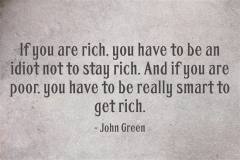The Cheerleader Effect
“I don’t want to hear another negative word about cheerleaders. If it weren’t for cheerleaders, who would tell us when and how to be happy during athletic events? If it weren’t for cheerleaders, how would America’s prettiest girls get the exercise that’s so vital to a healthy life?”
Let It Snow: Three Holiday Romances / John Green

Who has not experienced it? You are sitting somewhere in a café by yourself, while you see a group of people chatting and laughing together (Not to bring any genders into the story), and they are shining like the sun itself. You wonder what a cool group they must be, being all cool and beautiful. Taking another sip, you quickly look at them again. Woah, they look really attractive and catching.
Yet another cognitive bias. This time it is the cheerleader effect, also known as the group attractiveness effect. In a way, it is kinda similar to the Halo Effect.
Well, basically, theory has it that individuals, men and women, look better while they are in a group, whereas if you isolate them and consider them separately, the result may not be as aesthetically appealing.
The most famous study on this subject, by Drew Walker and Edward Vul at the University of California, was conducted by showing the participants photos of men and women, each photo consisting of three individuals, and then also showing them each face individually and not within a group. The results showed that the participants generally assigned higher levels of beauty and attractiveness to individuals in group photos. According to the authors:
“…. this effect arises via an interplay of three cognitive phenomena:
(a) The visual system automatically computes ensemble representations of faces presented in a group
(b) Individual members of the group are biased toward this ensemble average
(c) Average faces are attractive.
Taken together, these phenomena suggest that individual faces will seem more attractive when presented in a group because they will appear more similar to the average group face, which is more attractive than group members’ individual faces.”
Interesting that our minds measure beauty by comparing it to the average, huh? Actually it is really kind of fascinating that our minds tend to bias each individual’s face toward the average picture of the group.
There have been recent studies on this topic, which support the results from the previous ones. In a study by Yvette van Osch et al from the University of Tillburg in 2015, they found out that:
“In nine studies, we find evidence for the so-called group attractiveness effect (GA-effect), using female, male, and mixed-gender groups, indicating that group impressions of physical attractiveness are more positive than the average ratings of the group members …. We explored two explanations for the GA-effect:
(a) Selective attention to attractive group members
(b) The Gestalt principle of similarity.
The results of our studies are in favor of the selective attention account: People selectively attend to the most attractive members of a group and their attractiveness has a greater influence on the evaluation of the group.”
So, maybe next time it would not be such a bad idea to have some of your friends accompany you to your blind date (Nah, just kidding).
Also watch
How everyone started speaking about it in the first place. Ladies and Gentlemen, let Barnie Stinson give you an example:
Further Reading
2003: Hierarchical Encoding Makes Individuals in a Group Seem More Attractive
How the “cheerleader effect” can make you appear more attractive
Yes the ‘cheerleader effect’ is real – and you can make it work in your favour
The Cheerleader Effect: Seeing faces in groups makes them appear more attractive

